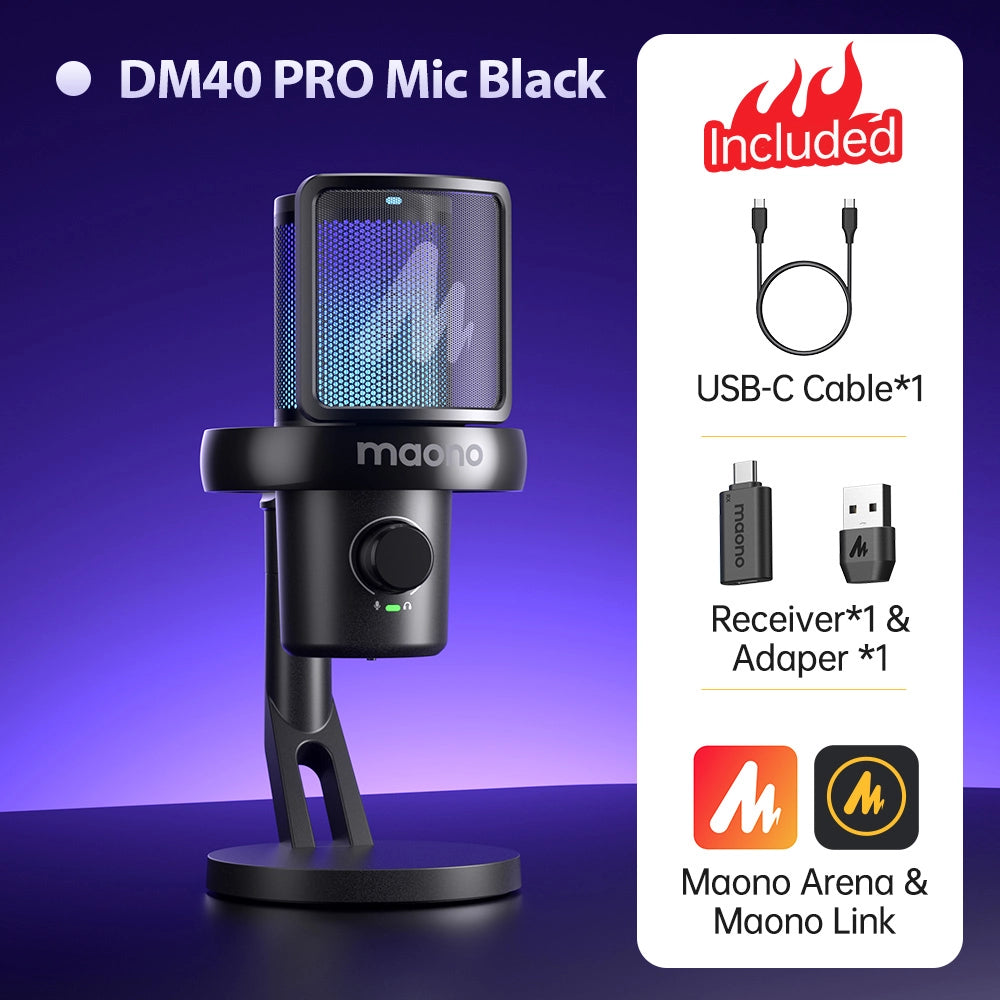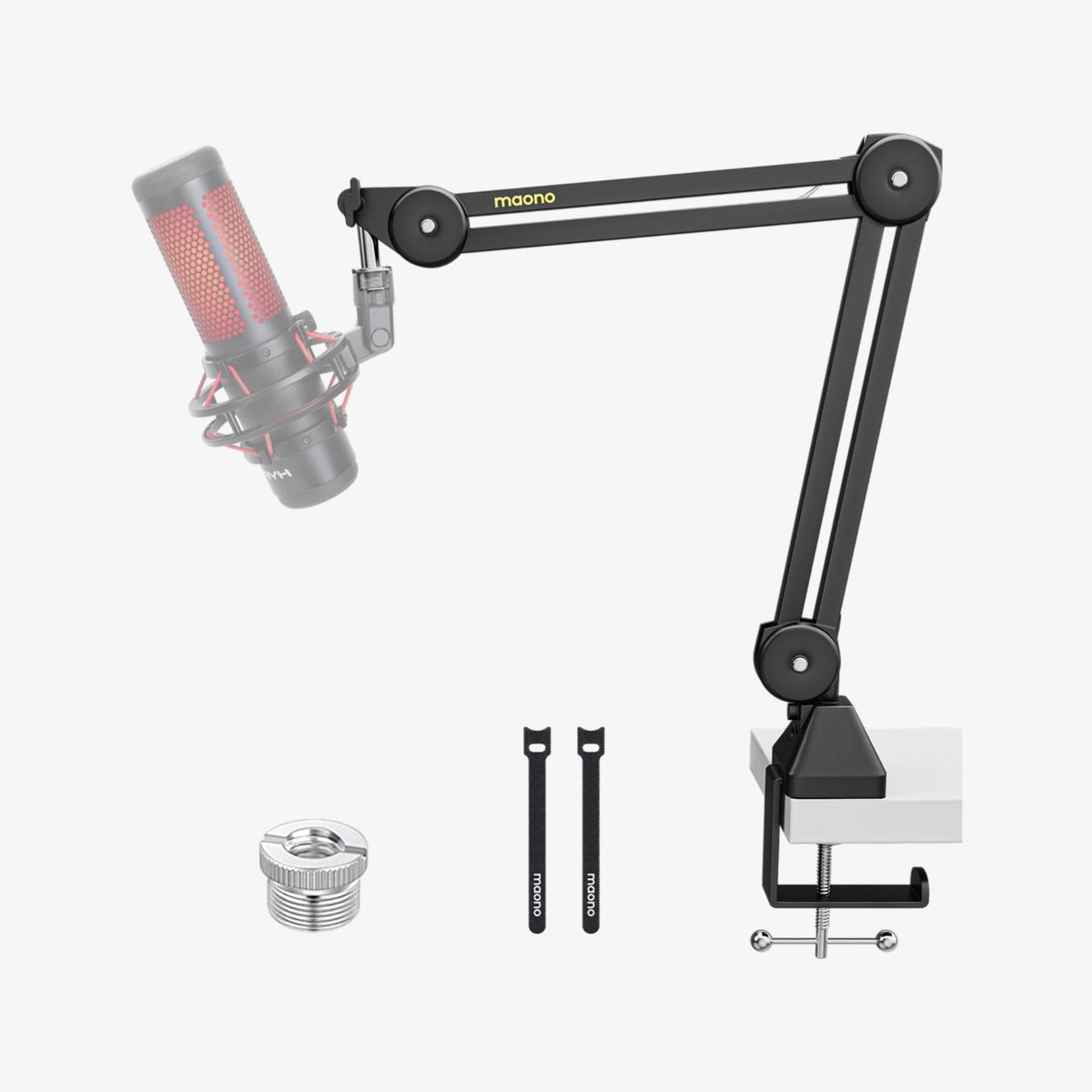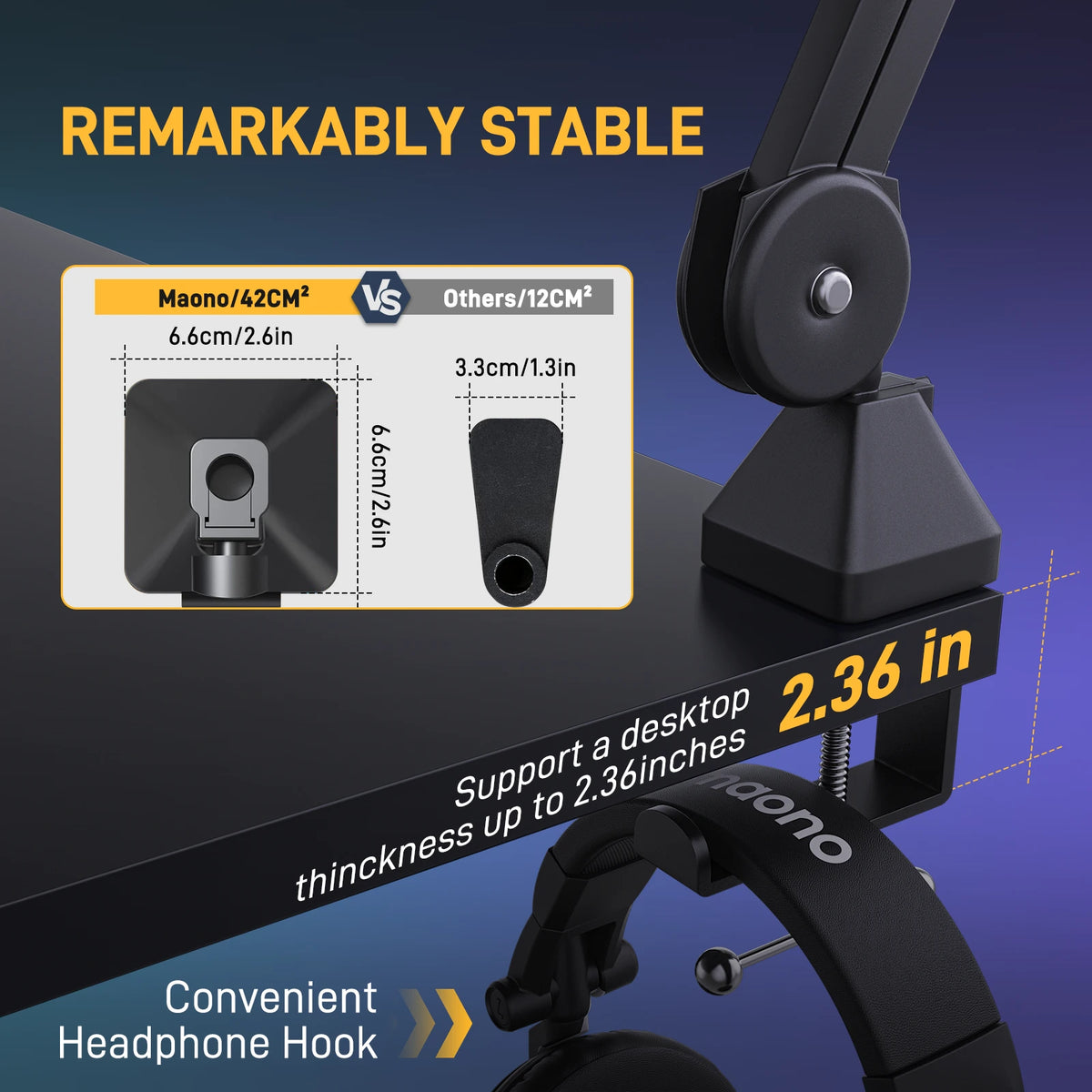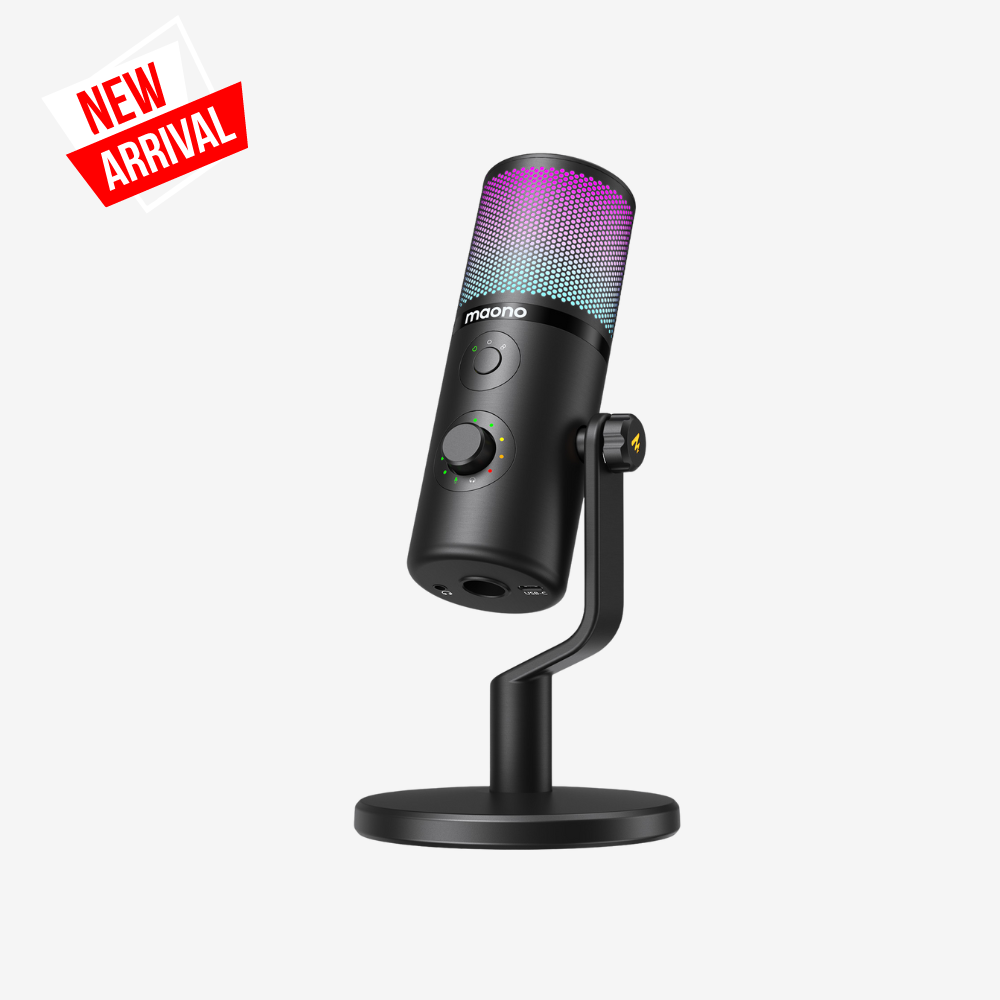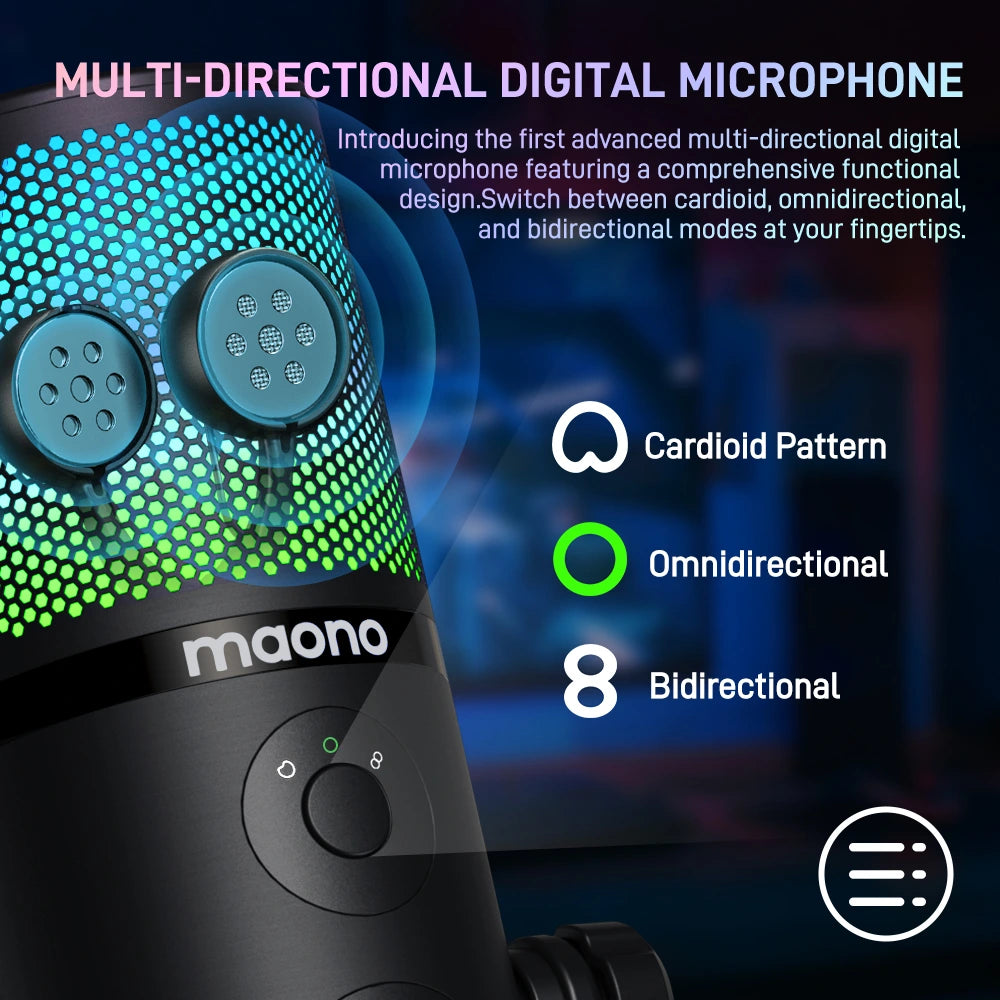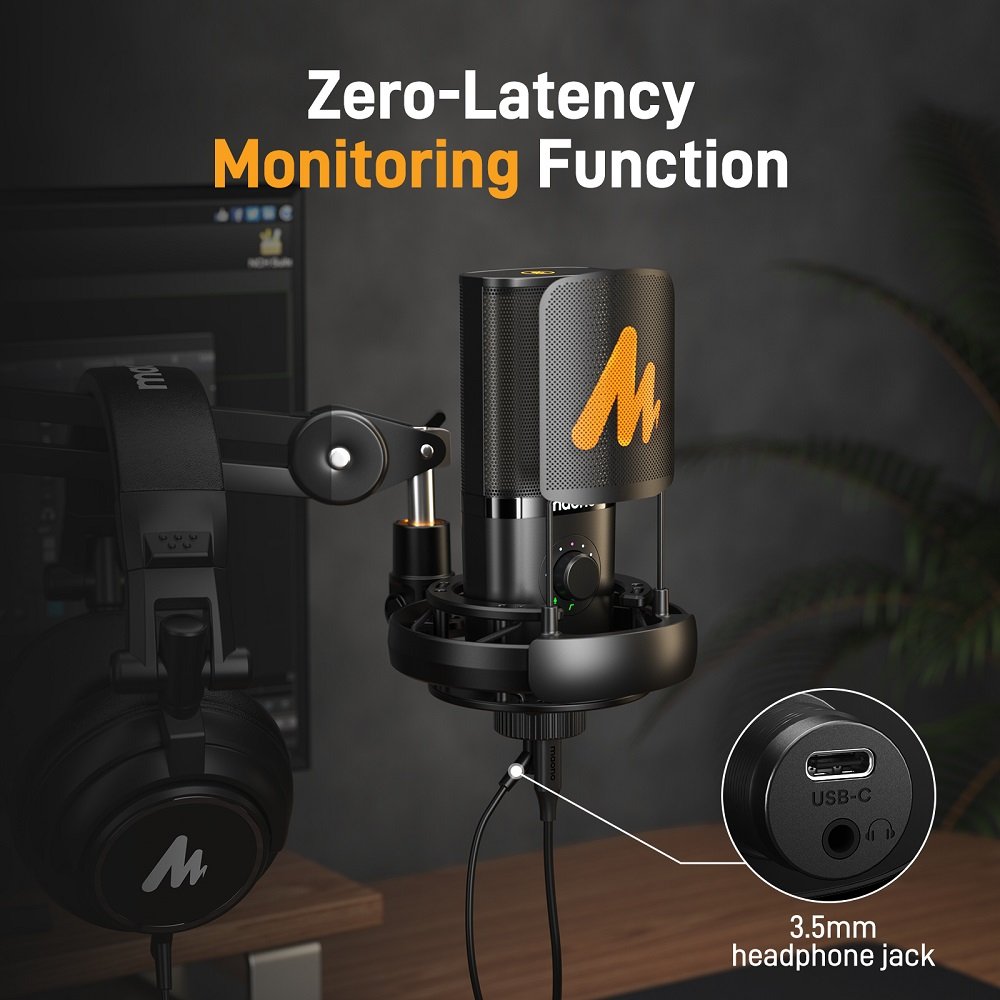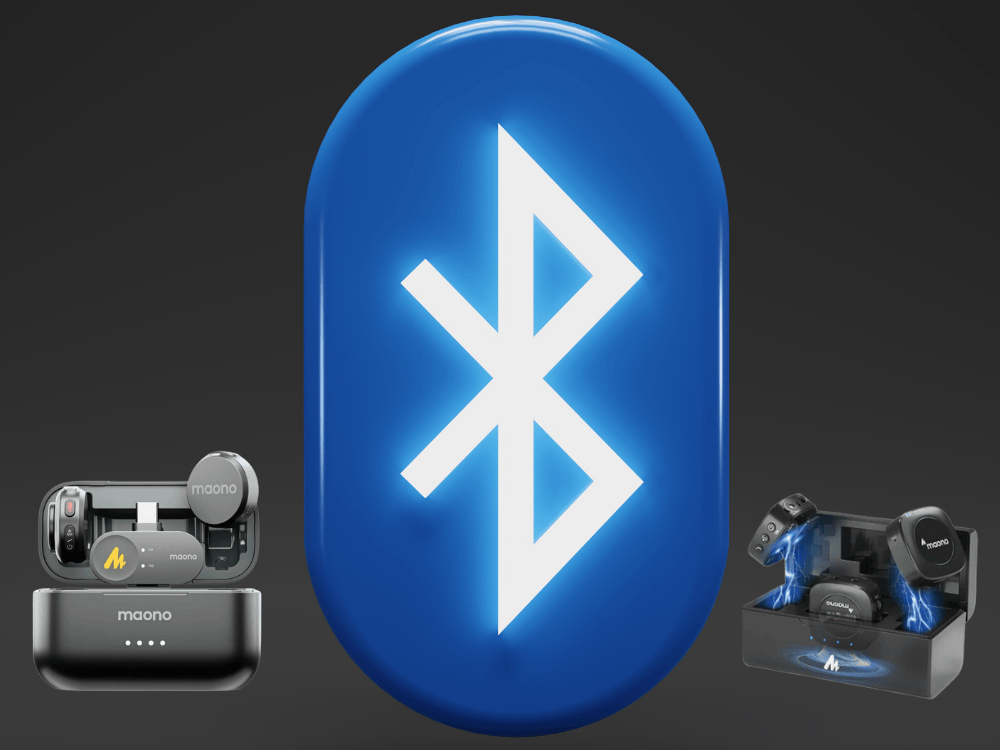Zoom meetings are often held online, so it's important to use a good microphone to ensure everyone can hear you clearly. USB condenser microphones are highly recommended because they offer high-quality sound and are easy to set up, making them perfect for virtual meetings and conferences. In today’s article, we will explore the best conference microphone for Zoom calls in 2025.

Best Mic for Zoom Calls in 2025
These are some of the best conference microphones for Zoom calls
1. Shure MV5
The Shure MV5 comes with a microphone, a stand, a USB cable, and a lightning cable, offering wide compatibility for direct connection to an iPad or iPhone. One of its most distinctive features is the three DSP preset recording modes: vocal, flat, and instrument. The vocal mode delivers clear, high-quality audio, which is great for Zoom calls. Additionally, it is a lightweight, portable microphone that is easy to carry around for on-the-go recording. Priced under $100, the MV5 is a worthwhile investment.
2. Samson Meteor Mic
Boasting a 25mm large condenser diaphragm and a wide, smooth frequency response, the Samson Meteor Mic is a portable USB microphone that produces rich, professional audio for virtual meetings. With an on-mic mute button and a headphone jack for latency-free monitoring, you have complete control during your Zoom sessions. It also comes with a flexible stand that allows you to adjust the height according to your needs.
3. Maono PM461

The Maono PM461 is a USB condenser microphone with a cardioid polar pattern that captures focused audio, making it ideal to use for Zoom conference calls.

The Maono A04 is also a USB condenser microphone that includes a pop filter and a shock mount to reduce unwanted noises and plosives. Its cardioid pattern enables to capture clear voice, perfect for conducting Zoom meetings or conference calls.
5. Blue Yeti
Blue Yeti is a condenser mic with versatile polar patterns and gain control, providing excellent audio quality for various Zoom scenarios.
Comparison Table for USB Best Conference Microphones for Zoom Calls

Features Breakdown: How These Mics Compare for Zoom Calls
1. Shure MV5:
- Audio Quality: Excellent sound with high resolution.
- Pickup Pattern: Cardioid, which captures sound from the front.
- Connectivity Options: Compatible with USB and Lightning devices.
- Price Range: Typically ranges from $99 to $120.
- More Features: Compact design, built-in headphone jack, three DSP preset modes.
- Pros: High-quality sound, portable, easy setup.
- Cons: Limited adjustability, higher price for size.
2. Samson Meteor Mic:
- Audio Quality: Good quality suitable for voice recordings.
- Pickup Pattern: Cardioid, ideal for focused sound capture.
- Connectivity Options: USB connection.
- Price Range: Usually between $69 and $99.
- More Features: Fold-back leg design, cardioid pickup pattern, USB connectivity.
- Pros: Affordable, portable, good sound quality.
- Cons: Build quality feels less premium, lacks advanced features.
3. Maono PM461:
- Audio Quality: Clear sound, great for budget users.
- Pickup Pattern: Cardioid, minimizing background noise.
- Connectivity Options: USB connection.
- Price Range: Affordable, Around $35.99.
- More Features: Cardioid pattern, adjustable volume, easy USB plug-and-play.
- Pros: Budget-friendly, decent audio quality.
- Cons: Limited features.
4. Maono A04:
- Audio Quality: Good quality for streaming and podcasting.
- Pickup Pattern: Cardioid, focused on direct sound.
- Connectivity Options: USB connection.
- Price Range: Typically between $49 and $59.99.
- More Features: USB connection, cardioid mic, shock mount, pop filter included.
- Pricing: ~Around $59.99
- Pros: Affordable, includes accessories for clear audio.
- Cons: Simple and basic construction but easy to use.
5. Blue Yeti:
- Audio Quality: Excellent sound quality with multiple settings.
- Pickup Pattern: Offers multiple options (cardioid, omnidirectional, bidirectional).
- Connectivity Options: USB connection.
- Price Range: Ranges from $99 to $129.
- More Features: Multi-pattern selection (cardioid, omni, bi-directional, stereo), gain control, headphone output.
- Pricing: ~Around $89.99
- Pros: Excellent sound quality, versatile with multiple patterns.
- Cons: Larger size, higher price compared to others.
What Makes a USB Microphone Ideal for Zoom Calls?
When selecting a USB microphone for Zoom calls, several factors contribute to an enhanced audio experience, including noise-cancellation, clarity, ease of setup, and reliability. Here’s an in-depth look at how these features and benefits contribute to a better Zoom experience:
1. Noise-Cancellation
Importance: Effective noise-cancellation reduces background sounds and ensures that the speaker's voice is clear and undisturbed by ambient noise. This is crucial in virtual meetings where distractions can interfere with communication.
Features and Benefits:
- Cardioid Polar Pattern: A cardioid polar pattern captures sound primarily from the front of the microphone, minimizing background noise from the sides and rear. This helps keep the focus on the speaker's voice, which is essential for clear communication.
- Built-in Noise Reduction Technology: Some microphones come with advanced noise-cancellation features that actively filter out unwanted noise, such as keyboard clicks or air conditioning hums. This results in a cleaner audio stream and a more professional sound quality.
2. Clarity
Importance: Audio clarity ensures that speech is easily understandable without distortion or muddiness. This is important for effective communication during meetings, presentations, and discussions.
Features and Benefits:
- High-Quality Condenser Capsules: High-quality condenser capsules capture a wide frequency range and produce detailed sound, making speech clear and natural. A large diaphragm condenser mic, for example, can deliver a rich, full sound that improves intelligibility.
- DSP (Digital Signal Processing) Presets: Some USB microphones offer DSP presets for different recording scenarios, such as vocal, flat, or instrument modes. These presets enhance clarity by optimizing audio settings for various contexts, ensuring that speech is well-articulated and easy to understand.
3. Ease of Setup
Importance: A straightforward setup process ensures that users can quickly and efficiently get their microphone ready for use without technical difficulties or delays.
Features and Benefits:
- Plug-and-Play Functionality: USB microphones that support plug-and-play functionality do not require additional drivers or complicated installations. Users simply connect the mic to their computer, and it’s ready to use, making it ideal for spontaneous meetings or remote work setups.
- User-Friendly Controls: Microphones with easy-to-use controls, such as on-mic mute buttons and volume dials, allow users to manage their audio settings conveniently during calls. This feature is particularly useful for quickly muting oneself when needed or adjusting the microphone gain on the fly.
4. Reliability
Importance: A reliable microphone ensures consistent performance without frequent malfunctions or connectivity issues, which is crucial for maintaining professional communication during important calls.
Features and Benefits:
- Durable Build Quality: A well-constructed microphone with durable materials can withstand daily use and accidental knocks, ensuring longevity and consistent performance. High-quality microphones are often designed to handle various environmental conditions without affecting audio quality.
- Stable USB Connection: A stable USB connection ensures that the microphone maintains a consistent link to the computer, avoiding dropouts or interference during calls. This is particularly important for maintaining clear audio throughout the entire duration of a meeting.
5. Cardioid Pickup
Importance: A cardioid pickup pattern focuses on capturing sound directly in front of the microphone while minimizing background noise from the sides and rear, making it ideal for Zoom conference calls by ensuring clear voice isolation in busy environments.
An ideal USB microphone for Zoom calls combines effective noise-cancellation, excellent clarity, ease of setup, and reliability. Features such as a cardioid polar pattern, high-quality condenser capsules, DSP presets, plug-and-play functionality, and robust build quality contribute to a superior Zoom experience. By focusing on these aspects, users can ensure that their audio is clear, professional, and free from distractions, enhancing the overall effectiveness and efficiency of virtual meetings.
How to Choose the Best Conference Microphone for Zoom Calls
When selecting a microphone for Zoom meetings, several key factors can greatly influence your decision. Here’s a quick guide to help you choose the best mic for your needs.
1. Budget
Start by determining your budget. Microphones come in a wide range of prices, from budget-friendly options under $50 to high-end models exceeding $200. A higher price often means better audio quality and more features, but there are many affordable options that deliver good performance for casual use. Assess how frequently you'll use the mic and what you're willing to spend to find a balance that works for you.
2. Intended Use
Consider how you plan to use the microphone. If you’re using it for professional purposes, such as hosting webinars, conducting interviews, or recording podcasts, invest in a higher-quality mic that captures clear audio. For casual use, like family calls or occasional meetings, a decent USB microphone may suffice. Your intended use will dictate the level of quality you need.
3. Audio Quality
Audio quality is critical for effective communication. Look for microphones with a good frequency response and noise cancellation features. Condenser microphones typically offer higher audio fidelity, making them great for vocals. Dynamic microphones are often more durable and better at rejecting background noise, making them suitable for loud environments.
4. Pickup Patterns
Different microphones have various pickup patterns that affect how they capture sound. A cardioid microphone picks up sound primarily from the front, making it ideal for focused audio in quiet environments. Omnidirectional microphones capture sound from all directions, which can be useful in group settings but may also pick up unwanted background noise. Choose a pickup pattern that aligns with your usage scenario.
5. Environment
Your recording environment plays a significant role in mic performance. If you're in a quiet home office, you can opt for a more sensitive condenser microphone. However, if you’re in a noisy space, consider a dynamic microphone with good noise rejection. Additionally, look for microphones with built-in pop filters or windshields to minimize unwanted sounds.
6. Connectivity Options
Check the connectivity options of the microphone. USB microphones are easy to set up and compatible with most computers, making them ideal for Zoom calls. XLR microphones typically offer higher sound quality and flexibility but require an audio interface, which adds complexity and cost.
7. Portability
If you plan to use the microphone in different locations, consider its portability. Lightweight and compact models are easier to transport, while larger setups may be more cumbersome.
By considering these factors—budget, intended use, audio quality, pickup patterns, environment, connectivity options, and portability—you can select the right microphone for your Zoom meetings. A well-chosen microphone will enhance your audio quality, ensuring clearer communication and a more professional appearance in your virtual interactions.
Frequently Asked Questions:
1. What is the best microphone for Zoom calls?
The best microphone for Zoom calls often depends on individual needs and preferences, but some top choices include the Blue Yeti, Shure MV5, Samson Meteor Mic, and Maono A04. The Blue Yeti is renowned for its versatile polar patterns and high audio quality, making it ideal for various recording situations. The Shure MV5 offers compactness and DSP presets for clear audio, while the Samson Meteor Mic provides portability and a cardioid pattern for effective noise reduction. The Maono A04 is known for its comprehensive setup, including a pop filter and shock mount, which are beneficial for high-quality voice capture. Each of these microphones excels in delivering clear, professional sound, making them excellent choices for Zoom calls.
2. What’s the best budget mic for Zoom calls?
The Maono PM461 offers great value at around $40, delivering decent sound quality for Zoom calls at an affordable price.
3. Can I use a regular USB microphone for Zoom?
A regular USB microphone like the Maono PM461 or A04 can easily be used for Zoom calls, providing good audio quality with simple plug-and-play setup.
4. How to improve audio quality in Zoom meetings?
To improve audio quality in Zoom meetings, consider the following tips:
- Use a Quality Microphone: Invest in a good USB microphone with features like noise-cancellation and a cardioid polar pattern to capture clear audio while minimizing background noise.
- Optimize Microphone Placement: Position the microphone close to your mouth but out of the direct line of breath to avoid popping sounds. Ensure it’s not picking up too much ambient noise.
- Adjust Audio Settings: In Zoom, go to Settings > Audio and ensure “Automatically adjust microphone volume” is unchecked. Manually adjust the microphone gain to avoid distortion. Enable “Suppress background noise” for cleaner audio.
- Use Headphones: Wearing headphones helps prevent audio feedback and ensures that the microphone only picks up your voice.
- Check Your Environment: Choose a quiet location for your calls and use soft furnishings to absorb sound and reduce echo.
5. Which microphone is best for virtual meetings?
The Maono PM461 or the Maono A04 are the best choices for virtual meetings like Zoom or Skype, offering excellent sound quality and versatile features, including multiple pattern modes for different environments.
6. What is the difference between a USB microphone and an XLR microphone for Zoom calls?
A USB microphone connects directly to a computer via a USB port and is typically plug-and-play, making it easy to set up and use without additional equipment. It’s ideal for most users who need straightforward, high-quality audio for Zoom calls. An XLR microphone requires an audio interface or mixer to connect to a computer, which can provide higher audio quality and more control but involves a more complex setup. XLR microphones are often preferred in professional studios but may be overkill for simple Zoom meetings. For most Zoom users, a USB microphone offers sufficient quality and ease of use.
7. How does USB conference microphones and traditional conference microphones compare?
USB conference microphones are plug-and-play, making them ideal for remote meetings and small setups due to their ease of use and compatibility with computers. They often feature cardioid or omnidirectional polar patterns and are budget-friendly.
Traditional conference microphones, on the other hand, are designed for larger professional setups, offering advanced features like multi-mic integration, better noise reduction, and compatibility with high-end audio systems. However, they require additional equipment, such as an audio interface or mixer, and are less portable.
For smaller meetings or virtual calls, USB microphones are practical, while traditional ones excel in larger, in-person conference environments.
Take a look at the above decent and best conference microphone options, which are easy to use, and make the most of your upcoming video conferences!”
Also Read:
USB Microphones: Capture Clean and Rich Audio in Your Conference Calls










